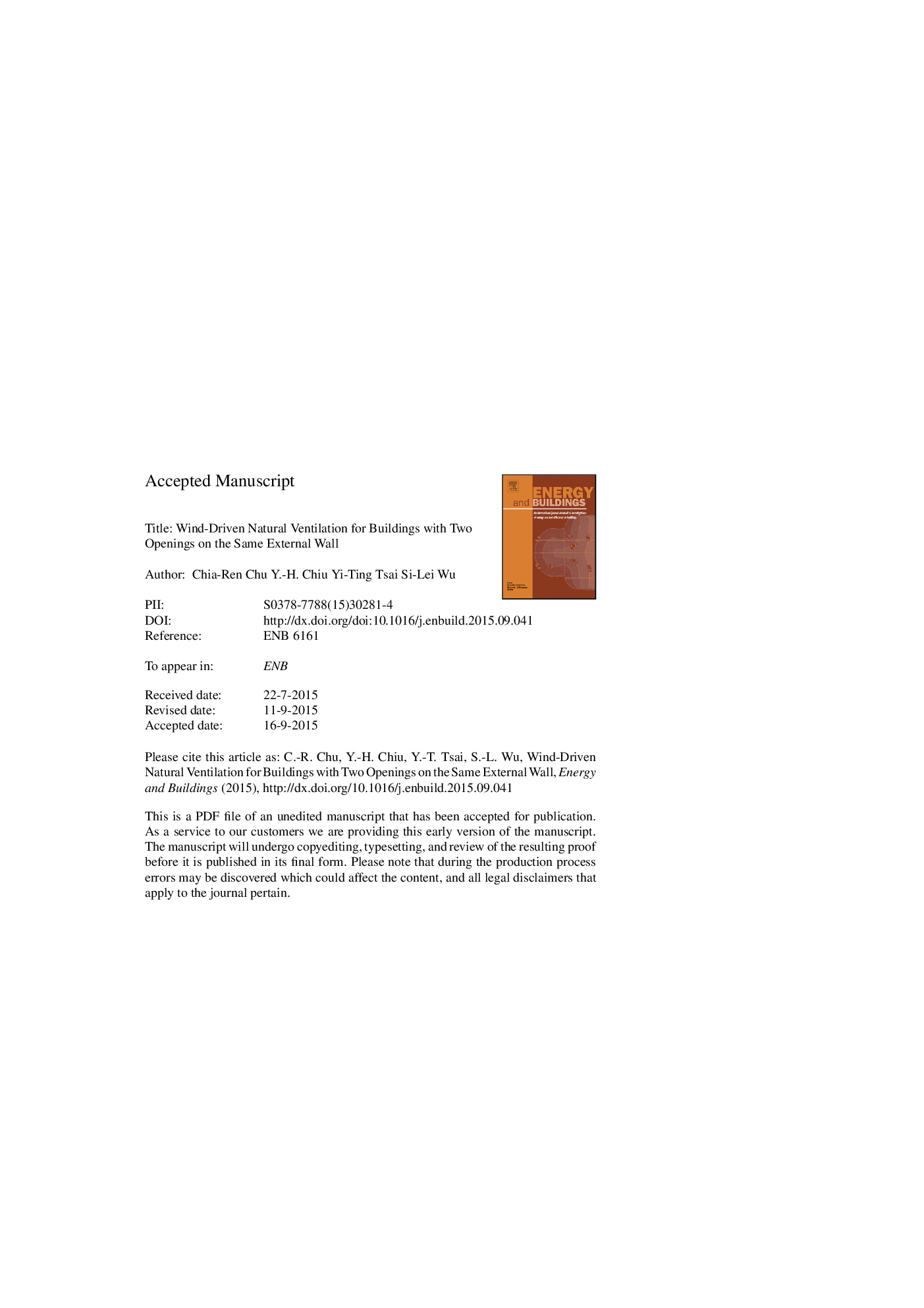| Article ID | Journal | Published Year | Pages | File Type |
|---|---|---|---|---|
| 6731118 | Energy and Buildings | 2015 | 38 Pages |
Abstract
This study uses wind tunnel experiments to investigate the wind-driven ventilation for buildings with two openings on a single wall. The exchange rates are measured by the tracer gas decay method under different external wind speeds, directions and opening sizes. The experimental results indicate that the time-averaged pressure difference across the openings is much larger than the fluctuating pressure when the wind direction is θ = 22.5-45°, and the ventilation rate can be predicted by the orifice equation. When the wind direction is θ = 0° and 67.5-180°, the pressure difference across the openings is insignificant and the fluctuating pressure entrains air across the openings. The exchange rate is proportional to the root-mean-square of the pressure fluctuation. Furthermore, the dimensionless exchange rate of the shear-induced ventilation (wind is parallel to the openings) is found to be independent of the wind speed, opening area and location. The exchange rate for buildings with an internal partition is lower than that without a partition when the wind direction is θ = 0-90°. A semi-empirical prediction model is proposed to calculate the exchange rate by incorporating the time-averaged pressure difference and pressure fluctuation. The application of the prediction model to compute the air change rate (ACH) is also discussed.
Keywords
Related Topics
Physical Sciences and Engineering
Energy
Renewable Energy, Sustainability and the Environment
Authors
Chia-Ren Chu, Y.-H. Chiu, Yi-Ting Tsai, Si-Lei Wu,
